Arriving in Lofoten on Barba was quite a feeling. I’d visited the archipelago several times since falling in love with this part of Norway during a camping trip a few years back. But once we arrived in Reine, Lofoten’s poster child, I had trouble convincing some of the crew that we should hurry along to Henningsvær, my favorite spot in the archipelago (to sway the boys, I exaggerated stories of a bar there full of sporty Swedish climber girls).
Jon trimming the sails. By Daniel Hug / Terragraphy.de
The winds were with us as we sailed east at upwards of 7 knots the whole way. And it was quite awesome, on approach, to receive a text from my friend Ragnhild with a photo of Barba she’d just taken from her backyard. We sailed into the harbor under a bridge just a meter higher than Barba’s mast, adding to the adrenalin rush.
Henningsvær is a special spot for me mostly because of the people I know here, namely Hanna and her family who live at the old cod warehouse called Heimgårdsbrygga and nearby. I was excited for the crew to meet everyone and enjoy the place, too.
Ivan showing some dancing moves at the climbing bar in Henningsvær. By Andreas
We had a scallop dinner in the boat when we arrived with Hanna, Ragnhild and Ørjan and then headed out to the local bar, Klettern, for quite a funny night with a “group of international partiers” as a most random entourage of Americans, Singaporeans, Hong Kongers and Australians described themselves. They were in full stars and stripes regalia celebrating July 4th, and seemed just as fascinated by Barba’s international mashup as we were by them.
The next evening Hanna hosted all of us for dinner at Heimgardsbrygga along with Rolf and Camilla – who Andreas and I both know from when we went snorkeling with them in Andenes last February to see the orcas – and some nice guys from Poland working in the Henningsvær whale factory.
It’s whaling season in Lofoten, and the boats are headed out from here to as far north as Bear Island and Svalbard to catch minke whales to be sold on the Norwegian market. The whale factory manager told us that Norway has a quota of 1,200 minke whales a year, but most years only half that amount are killed (by harpoons loaded with an explosive and fired by a gun).
Whale for dinner at Hanna´s place. By Daniel Hug / Terragraphy.de
I had mixed feelings seeing the dark red meat in her kitchen as she shaped it into meatballs and prepared it tataki style (a recipe she learned from some Japanese whalers who’d visited). But mostly I’ll admit I felt okay with the fact that I’d be eating one of my favorite ocean animals since it´s a long-standing Lofoten tradition. Then I conversely felt bad about feeling okay with that, especially when I bit into the whale and it tasted more or less like a gamier version of beef – and quite delicious, admittedly. Whale has been eaten for centuries in Lofoten and it’s being slaughtered here in a sustainable and humane way (everyone swore to me the animals´death is instant), so I dug in and enjoyed the fascinating company. Henningsvær is an eclectic community of artists and outdoorsmen and women, and every conversation inadvertently became an information-gathering jackpot for our trip.
Rolf and Camilla had valuable whale-seeking and film-making advice for making the most of our time. Hanna – captain’s daughter and sailor that she is – tried to teach me some shortcuts for baking bread and making fish stew onboard. And the Polish whale meat cutters had sailed to Svalbard and regaled us with tales of pushing through the ice, broken heaters onboard and bitter, mind-numbing cold. Still, their eyes got that dreamy far away look when they spoke, and I felt lucky to have Svalbard still in front of me instead of a memory, which it all too soon will be.
The expedition life is not all about being miserable. The crew with the world´s best cousin (Andreas´), Ulf and his family, Eyvind, Ingrid and Grete (from left) . By Daniel Hug / Terragraphy.de
On our third evening in Henningsvær we had an invitation from Andreas’ cousin and his wife, Ulf and Ingrid, to join their family for dinner in nearby Kabelvåg where they were vacationing for the week. Bring your bathing suits, they said, then surprised us with cold beers to be enjoyed in an outdoor jacuzzi with some of the best hot tub views of my life (and I’ve had a few), looking out at the peaks of Vågakallen. We cold-plunged into the icy fjord before sitting down for a bacalao dinner Ulf had prepared in the Portuguese-influenced tradition of Kristiansund – a city to the south where his and Andreas’ fishing families have their roots. It’s all about fish in Norway, I continue to learn, and every town has its story and salty characters.
We were not roughing it in Henningsvær at all (especially me, who ditched Barba for a bed in Hanna’s place), even if there was some work to do in port preparing the boat by testing out how to best rig our storm sail and practicing setting the too-big leak tarp on the hull. We’ll have to find a fix for the latter issue in Tromsø as sailing in the ice in Svalbard invites the chance for the hull to come into contact with something it shouldn’t. Being prepared to deal with a leak is a necessary evil.
Andenes in the 1am light. By Daniel Hug / Terragraphy.de
When we finally left Henningsvær after three great days it was with an eye on making it to Andenes, about a 12-hour sail away, where Andreas and I had snorkeled with orcas in the winter. We wanted to see if the whales were still hanging around.
Rolf had given us a local contact there, a whale researcher with Norwegian Orca Survey named Ricard, who gave us the lowdown on where we might spot the animals. Orcas, he said, had recently been seen in very shallow areas next to Andenes’ rocky shores. They were hunting seals – a behavior that’s not really been seen before in this area, where the orcas usually feed on the overwintering herring (and snorkelers dive in to witness the spectacle). Ricard told us he wouldn’t get in to snorkel around orcas feeding on seals, but I could see on Andreas’ face that his mind had yet to be made up.
Daniel Hug with the pilot whales. By Andreas
That evening, after a nice hike to the mountaintop over Bleik and a deserved reward of a pizza feast at a restaurant, we got a call from Ricard. Hundreds of pilot whales were gathering not far from the harbor. So out we went in Barba and were soon enough surrounded by the animals, which look like oversized dolphins, some even approaching orcas in size. The midnight sun was shining brighter than ever, putting everything into gold-bathed relief around us, whale fins included.
Keen to see sperm whales, we left port early the next morning to head out several hours to the continental shelf, where the water plunges to 1,200 meters and sperm whales hunt their deep-water prey, mostly squid. It took a few hours but we did eventually spot one, a hump like a snow-hill, so they saying goes, spewing its breath off in the distance.
Ivan, still happy, thinking he won the fishing competition. By Daniel Hug / Terragraphy.de
From there it was a long sail to Senja, an island that’s been described as “Norway in miniature” thanks to its diverse terrain of fjords and mountains. It looked just like the Grand Tetons rising from the water, with a side of Hawaiian-style emerald hues in the mix. And when Jon and Ivan tossed out their fishing lines, the Norway vs. Russian competition was on. Russia almost won, when two enormous haddock latched onto the line at once. But Jon was faster at reeling in the handline with a cod and took the prize…and then followed it up with one of the most massive cods he’d ever caught, somewhere around 10 kgs we reckoned. Two haddock that will feed us all shouldn’t make anyone a loser, but Ivan was on the losing end of a bet that had him cleaning and filleting the catch, which he turned into a tasty soup for dinner.
Barba quayside at Mefjord Brygge, halibut-fishing hotspot. By Terry Ward.
We spent two nights in port in Mefjord Brygge, a pretty fishing hamlet with aluminum boats for rent and more than a few Russian tourists looking to hook a prize halibut. All around us there were mountain peaks calling our climbers and wild coastline to explore, but the push to Svalbard is nagging the back of our minds all the time. It makes it hard to stay too long anywhere. Some of the crew went hiking and fishing for trout and Andreas and I found the time for a dive in waters chilled to 7 degrees C/44 degrees F, where we spotted a wolf eel among the waving kelp and I continued to work on my dry suit skills.
Terry Ward practicing buoyancy in the new Santi drysuit with a wolf fish. By Andreas
Right now I can’t imagine actually getting in the water in Svalbard, where polar bears roam, but I also know you should never say never. The future feels full of promise, either way.
Terry
Barba in Henningsvær, with the mountain Vågakallen in the background By Daniel Hug / Terragraphy.de
The midnight sun in Henningsvær. By Daniel Hug / Terragraphy.de
Preparations. Daniel Hug testing the new Musto drysuit, Andreas suspended in the mast and Jon sheltering from the momentarily-intense sun. By Terry Ward.
Daniel, dinghy hipster, cruising in Henningsvær harbour. By Andreas
Terry, Jon and Daniel doing a post-sauna fjord plunge! By random bystander who offered to take the pic.
Stopping by Trollfjorden on the way to Andenes. By Daniel Hug / Terragraphy.de
Daniel ready to take to the sky. The town of Bleik, next to Andenes, far below. By Andreas
Pilot whales outside Andenes. By Daniel Hug / Terragraphy.de
Pilot whale family outside Andenes harbour. By Daniel Hug / Terragraphy.de
Featured photo by By Daniel Hug / Terragraphy.de.
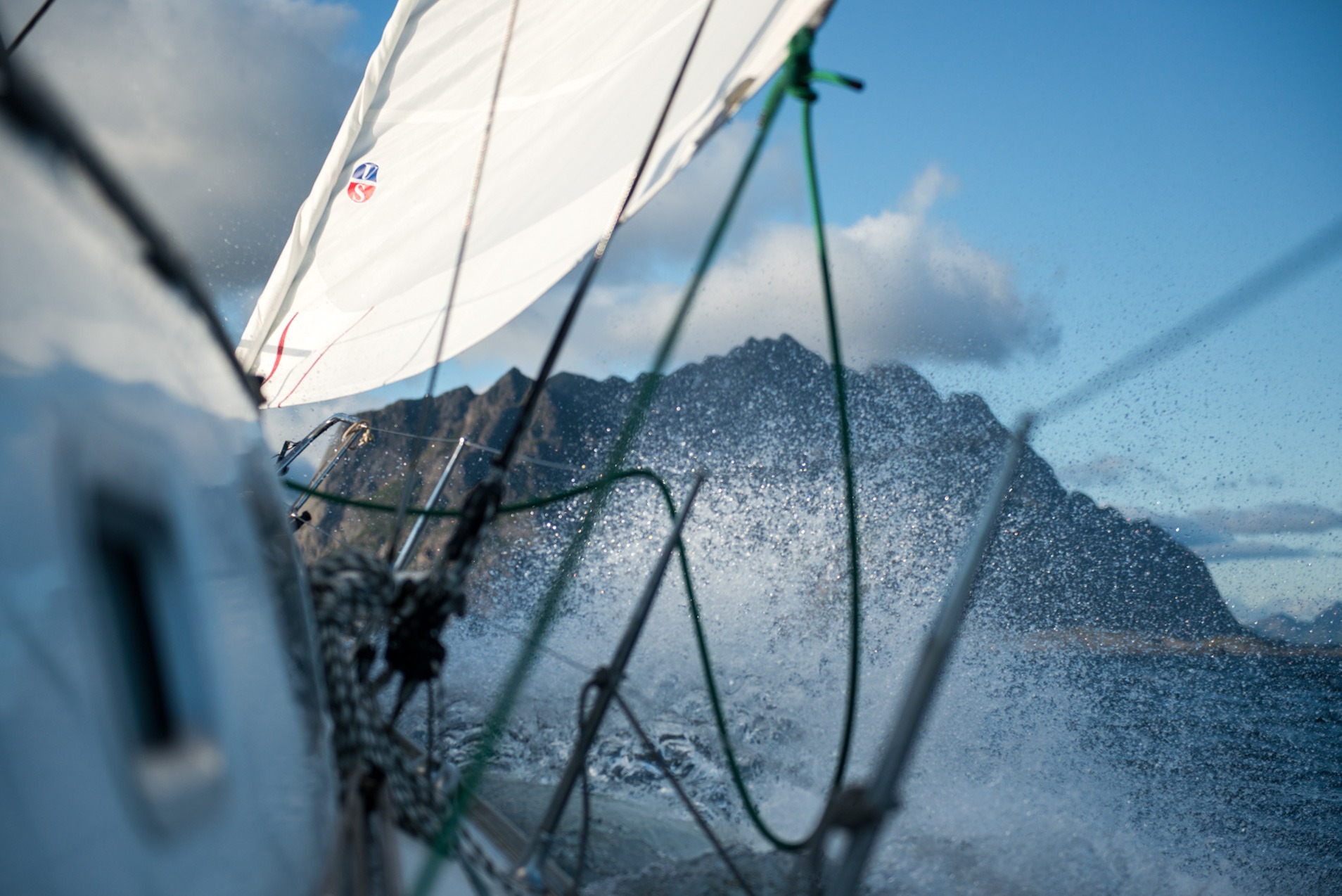
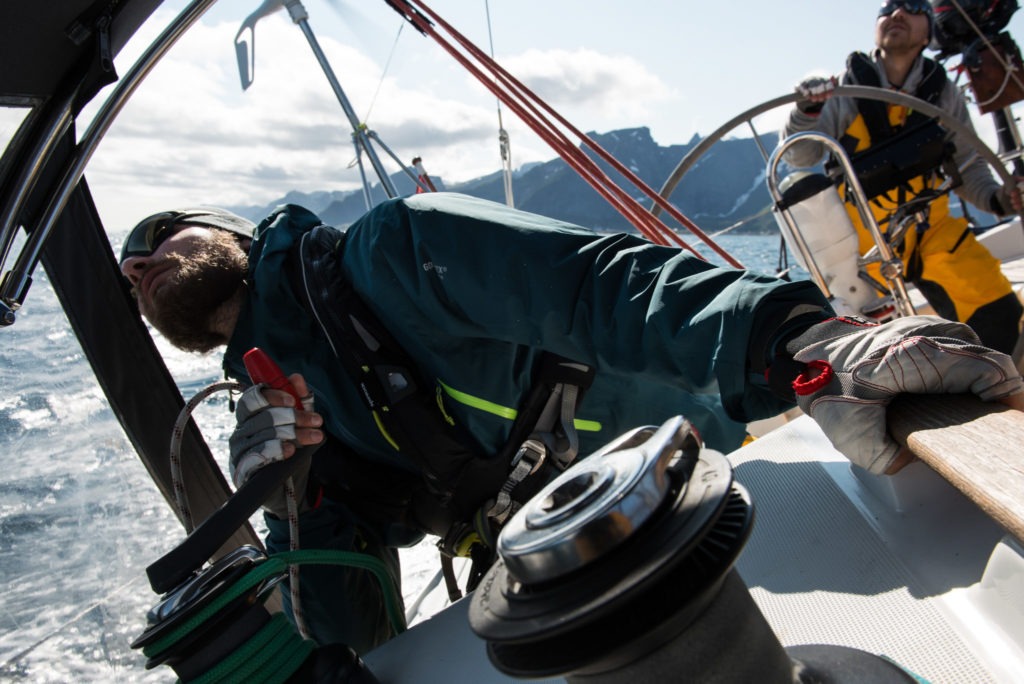
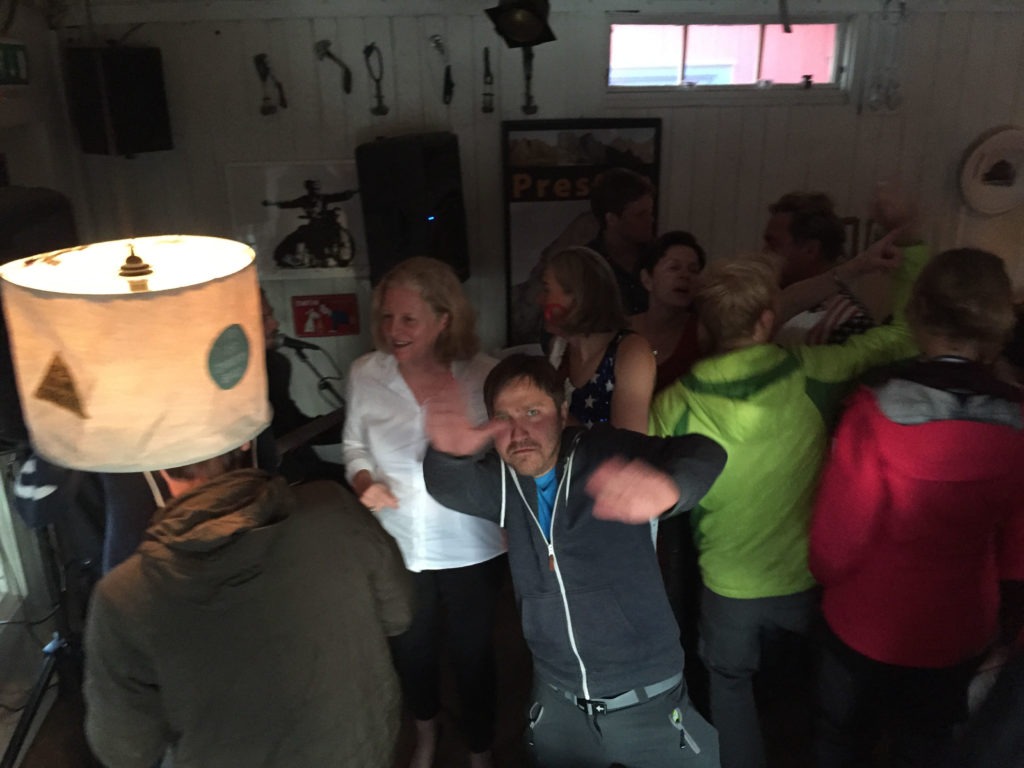

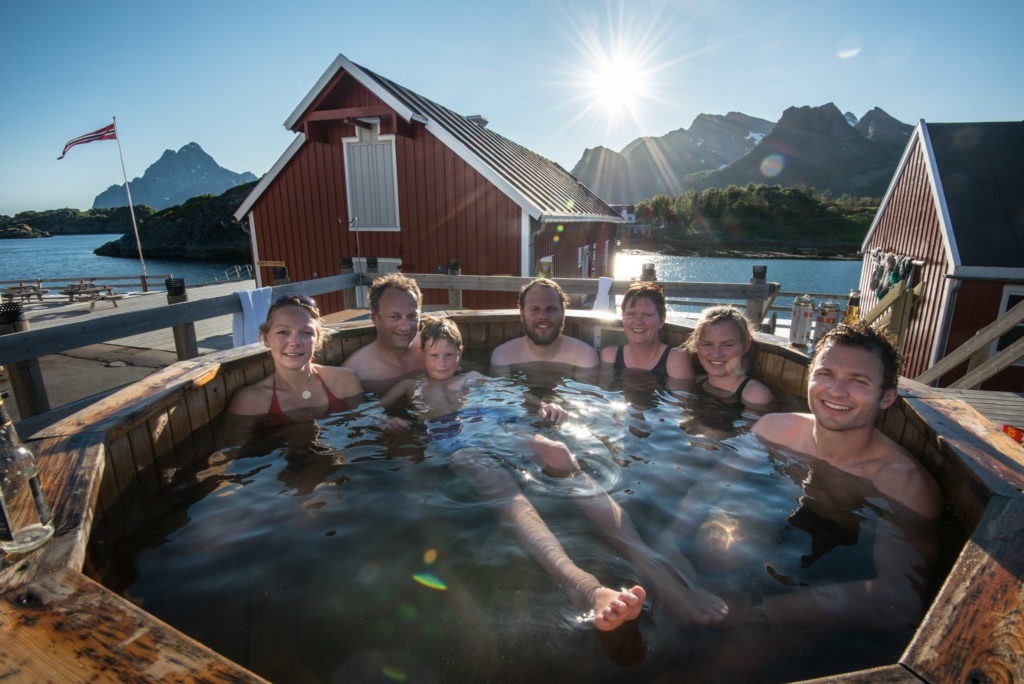
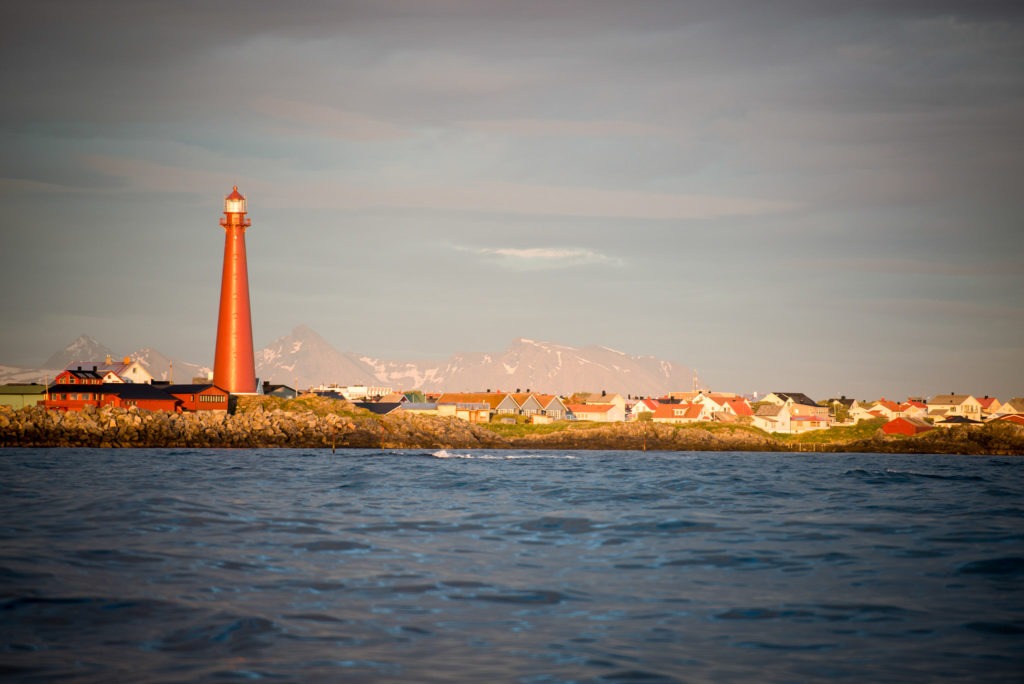
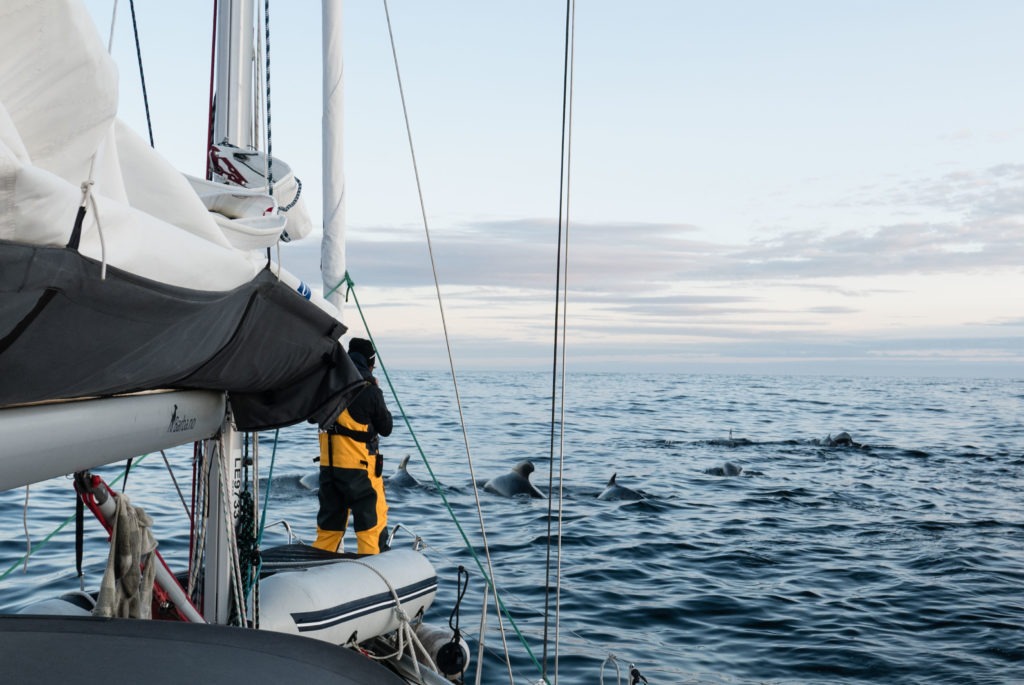

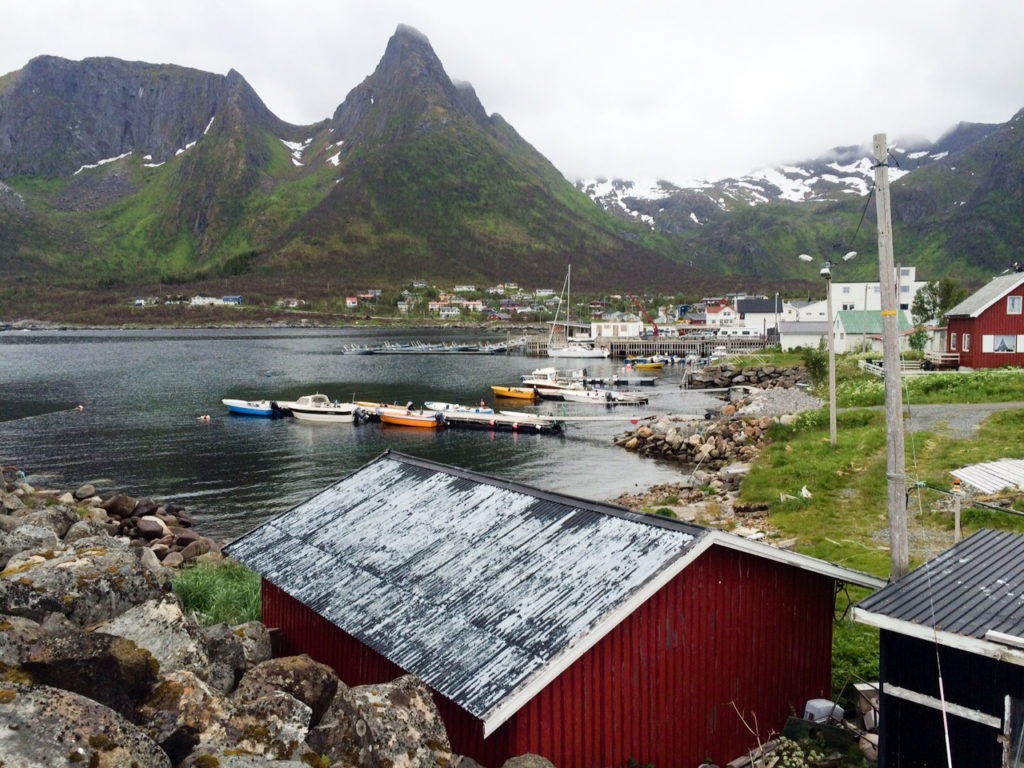

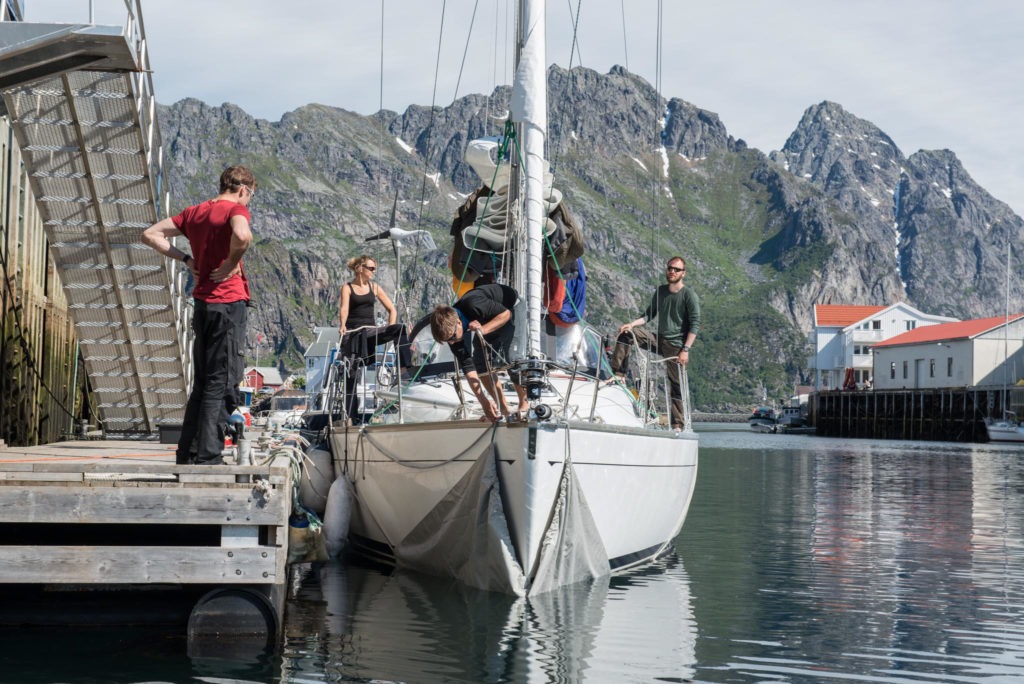

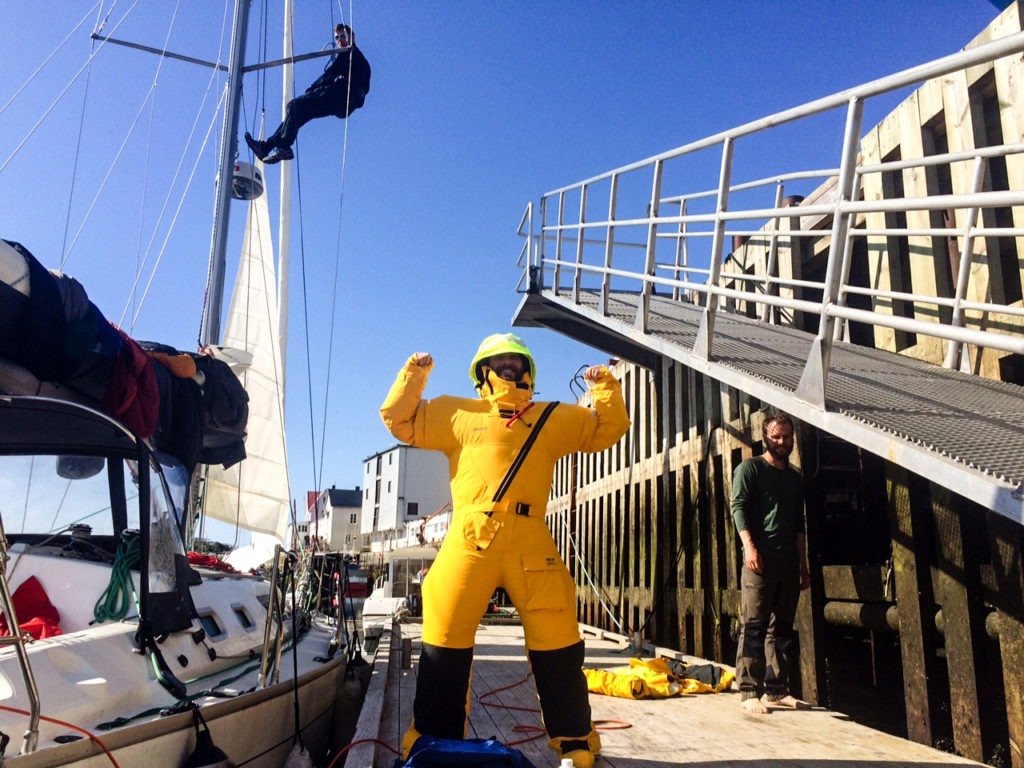
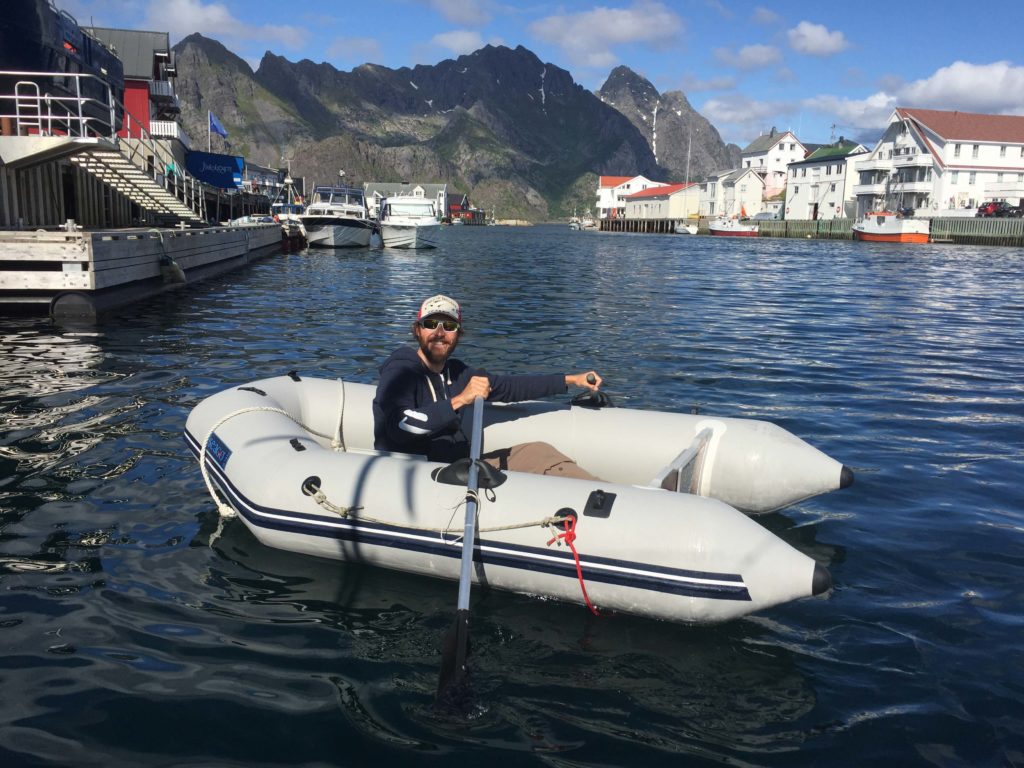

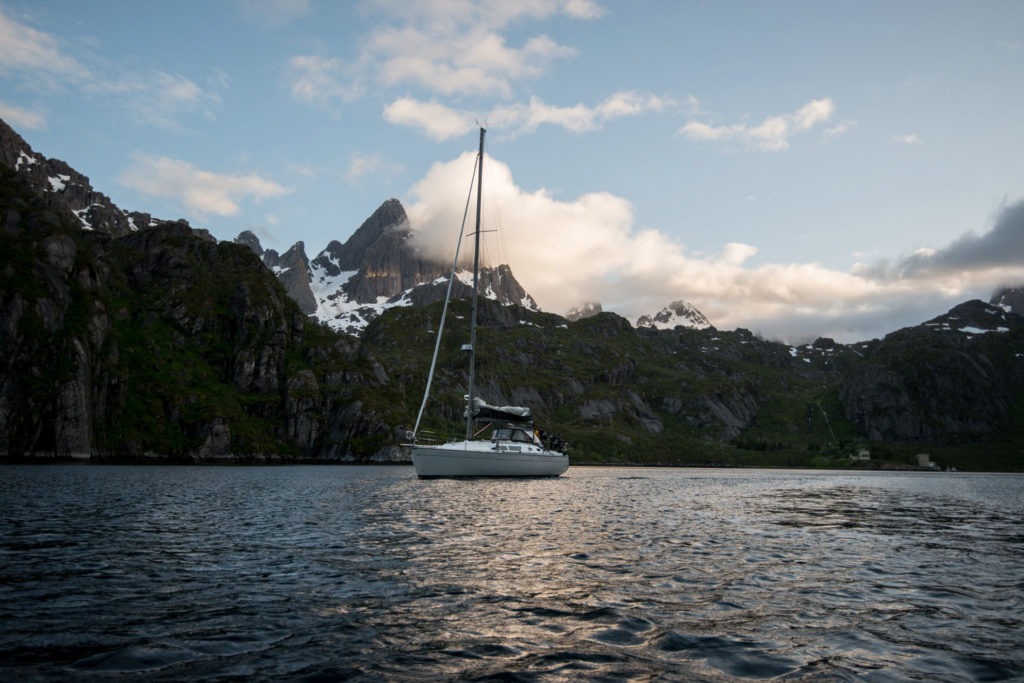
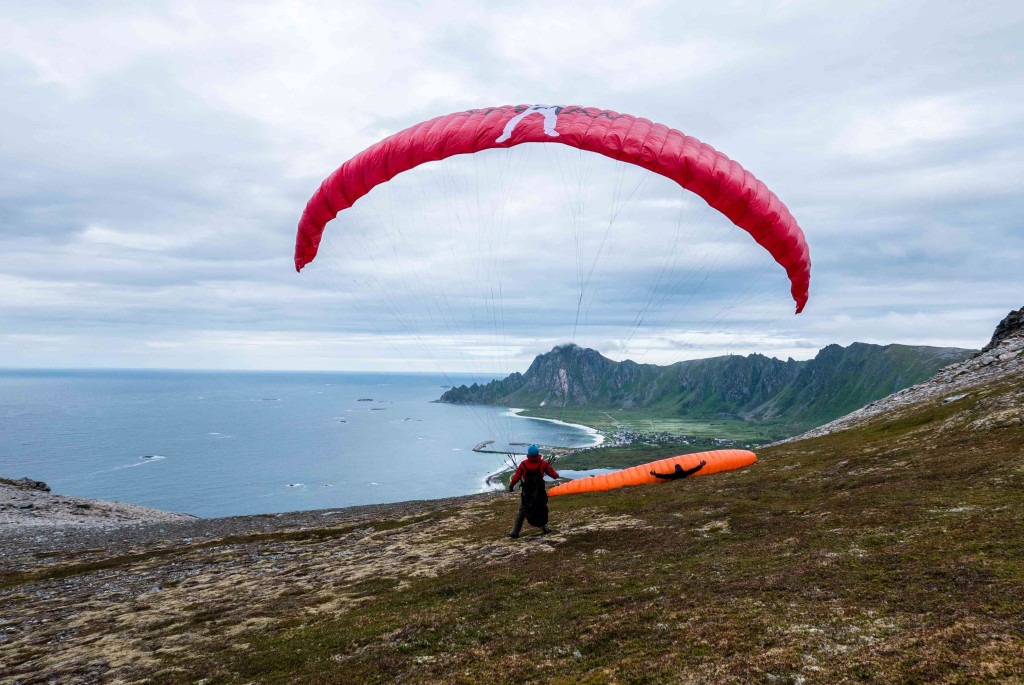
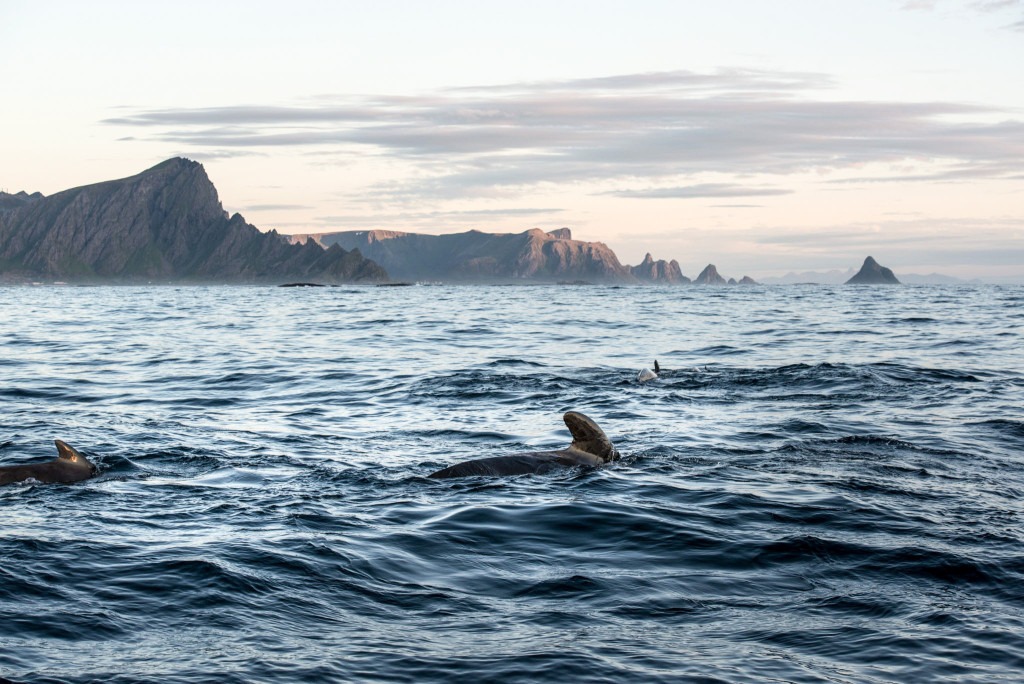
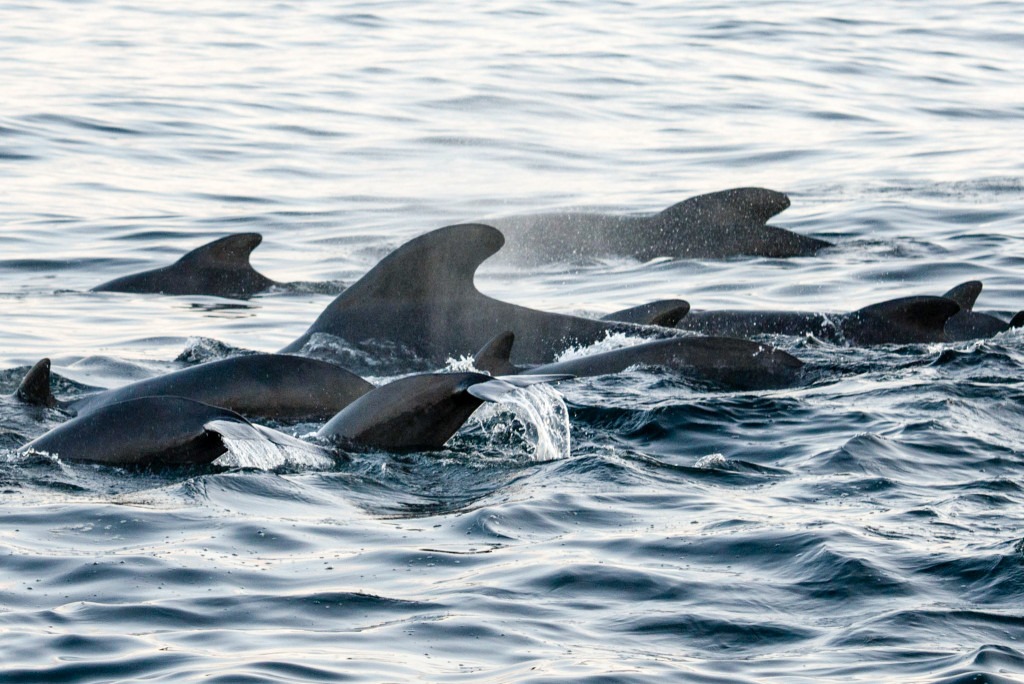

I actually swam in the waters of Svalbard! You can do it, too!
Awesome pictures; keep them coming.
Sound cool Kristin! Was it out of free will? For how long were you in the water? A.